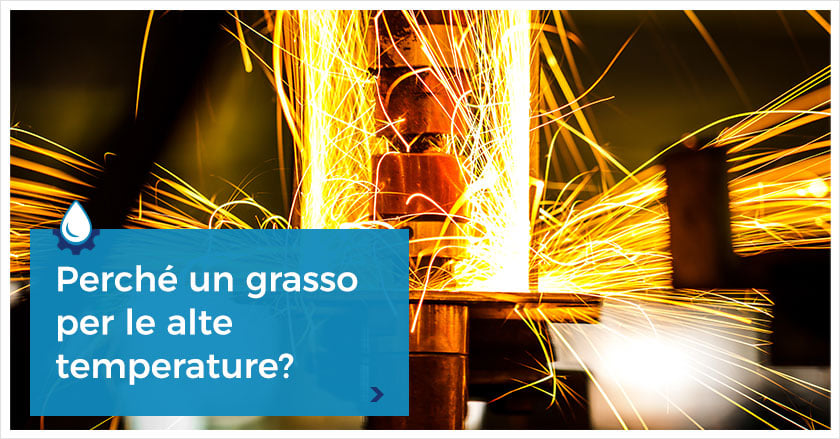
Why use a high-temperature grease?
What happens to mechanical devices when they are subjected to high temperatures?
High operating temperatures can cause significant changes in the chemical/physical properties of the materials, resulting in greater wear, lower efficiency or poor performance in general.
Correct lubrication, rather, can inhibit such phenomena, so long as its formulation is studied in detail.
Effects of temperature on mechanical devices
Let's start with the most obvious consequences of the malfunction of a mechanical device not equipped with a lubricant suitable for high temperatures. These can consist of:
- Thinning of the lubricating film, with a reduction of the viscosity of the lubricant with increasing temperature resulting in a reduction of the protective film with a consequent increase in friction
- Mechanical wear, as the loss of material due a the lack of hydrodynamic lubricating film, eroded by the processes of evaporation and oxidation
- Increase in the coefficient of friction caused by the evaporation of the fluid component and the formation of carbon residues
- Loss of efficiency with an increase in energy absorption and drive torques
- Increased noise due to mechanical wear, together with the increase in the coefficient of friction and the lack of the hydrodynamic lubricating layer, causing an increase in the noise due to the rubbing of the materials
- Premature blocking of the device and consequent loss of functionality of the entire system
Effects of high temperatures on the lubricant
High temperatures trigger processes of thermal degradation, mass loss and thermo-oxidation of a lubricating fluid as a consequence of phenomena of:
- Evaporation - the transition from liquid to gaseous state of light molecular fractions, with relative thinning of the lubricating film
- Primary oxidation - the 1st phase of thermal degradation, in which a cleavage of the C-C and C-H bonds takes place, with the formation of carbonyl radicals which in the presence of oxygen form peroxides
- Secondary oxidation - a radicalisation of the thermo-oxidation process with the formation of carbon deposits, lacquering and solid compounds, as part of which the lubricating film, if not properly restored, risks heavily compromising the functionality of the mechanical component in which it operates
How to check the effectiveness of a high temperature lubricant?
There are numerous tests to evaluate the thermal resistance capabilities of a lubricating fluid. ASTM D-5483 provides the value of the induction time (OIT), being the time required to exhaust the thermal absorption potential of a lubricant, subjected to certain conditions of temperature and pressure, before secondary oxidation processes take place (Oxidation Induction Time).
The induction time is directly proportional to the thermo-oxidative capacity of a lubricant where the higher the value, the greater the thermal load that the fluid can support, which in turn depends proportionally on its antioxidant content.
Characteristics of a lubricating fluid for high temperatures
The increase in friction and wear due to the rise in temperatures induce a rapid destructive process of the electromechanical component.
Assuming the design characteristics of the individual component as given and essential, the lubricating fluids are required to respect the thermal ranges set by the manufacturer and, where needed, a lubricant to last for the entire life of the component (as in the case of original equipment components in the automotive industry).
Why use a high temperature grease?
There are certain applications for which the ideal protective to use is grease rather than oil. This occurs when the component to be lubricated is not contained within a closed environment and therefore a lubricating fluid could come out of the housing, leaving the component free from protective film (as is the case for bearings, valves and gearmotors). Grease, on the other hand, has a viscosity and adhesiveness that allows the lubricant to remain right where it is applied.
An example of this can be found in the machinery for the production of corrugated cardboard.
But how does a grease resist when the heat increases? Compared to oil, lubricating grease guarantees a high drop point (the temperature that marks the transition from semi-solid to semi-liquid state) and therefore greater resistance to high temperatures (which can even exceed even 300° C). This result is achieved by adding a thickener to the base oil, with the additives and solid lubricants precisely what favour an increase in the drop point.
The higher the temperature the lubricant has to withstand, the more thickener and thus more lubricating grease will be needed.
Lubricating grease is only one of the solutions that can be adopted at high temperatures. Based on the materials, the areas of application, the other operating conditions and the actual temperatures that can be reached, it is always possible to find the most suitable solution.



